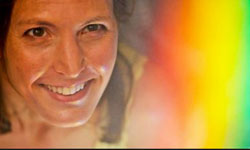Helen Czerski goes in search of colour. She reveals what it is, what it does, and why colour doesn't exist outside of our perception.In the first episode, Helen seeks out the colours that turned planet Earth multicoloured. This is an HQ version.
- No subtitles
- 60
Helen Czerski goes in search of colour. She reveals what it is, what it does, and why colour doesn't exist outside of our perception.In the first episode, Helen seeks out the colours that turned planet Earth multicoloured. This is an HQ version.
The raw, early Earth had plenty of colour, but that was nothing compared with what was going to come next. That canvas was about to be painted with a vast new palette - and the source of those colours was life. Green is the colour of the natural world and yet it's the one colour that plants have evolved not to use.This is an HQ version.
- No subtitles
- 60
The raw, early Earth had plenty of colour, but that was nothing compared with what was going to come next. That canvas was about to be painted with a vast new palette - and the source of those colours was life. Green is the colour of the natural world and yet it's the one colour that plants have evolved not to use.This is an HQ version.
We can't see in ultra violet, but many animals can. Helen explores what the world looks like to the birds and the bees. With the discovery of x-rays we could look inside ourselves in ways that previously had only been possible after death.This is an HQ version.
- No subtitles
- 60
We can't see in ultra violet, but many animals can. Helen explores what the world looks like to the birds and the bees. With the discovery of x-rays we could look inside ourselves in ways that previously had only been possible after death.This is an HQ version.



